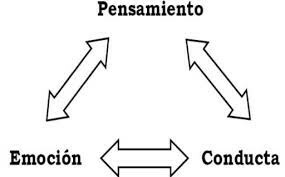What psychological therapies help chronic pain patients?
Imagine having constant pain for more than 3 months. Do you think it would affect your mood? Do you think that psychological therapy could help you?
The Malaga psychologist Ana Claudia Alda, from the cabinet Psychologists Málaga PsicoAbreu, informs us about how Psychology can help people who suffer from chronic pain.
- Recommended article: "Chronic pain: what it is and how it is treated from Psychology"
What is chronic pain? Psychological consequences
Chronic pain is one that lasts more than 3 months and is associated with a chronic disease (osteoarthritis, fibromyalgia, etc.). This type of pain forms a stressful experience for the person who suffers it, therefore, the person undergoes changes at a psychological level:
Emotional area. Emotions such as fear or anxiety In this situation. Fear begins to develop at the onset of pain and anticipatory anxiety is experienced. It is frequent that sadness also appears due to the situation experienced.
Cognitive area. There are cognitive patterns that patients with chronic pain often present and that also increase and maintain pain. The catastrophic interpretation of pain and its consequences, unrealistic expectations about the progression of pain or disease, and belief that it is appropriate to avoid activity to reduce the possibility of pain are some of the cognitions that intervene in the maintenance of pain.
Behavioral area. One of the most common responses to chronic pain is avoidance. The person avoids situations or behaviors because he thinks that if he does them the pain will increase. This supposes a total deactivation of the person, diminution of pleasant activities and the weakening of the muscles.

Effects at the social and labor level
The person also undergoes changes in the family, social and work area. Faced with a situation such as chronic pain, it is expected that the social and family life of the person who does it suffers from being modified: decrease in activities, feeling of misunderstanding by others, etc.
In the same way, it is frequent that the person has to stop working or reduce working hours. The person feels that he is no longer useful, that he is not as valid as before and, furthermore, these changes influence the economic sphere. All of this turns into stressors that increase the person's emotional distress and pain.
What role does psychotherapy have?
The approach to this medical problem is carried out from the biopsychosocial model. This model establishes that it is not only necessary to attend to the medical or biological variables, but also Other variables such as psychological and pain modulation also play a major role in pain modulation. social. Thus, it is established that the best way to work in these cases is with a multidisciplinary intervention, including Psychology.
As the psychologist Ana Claudia Alda has previously commented, chronic pain causes changes at a psychological level (emotional, cognitive and behavioral) that can maintain or increase pain. The role of psychotherapy is to help the person to adapt to this new situation through effective coping strategies such as active coping or acceptance.
What psychological interventions are used in chronic pain?
The psychological intervention that has classically been used in chronic pain to achieve the adaptation of the person has been the Cognitive-Behavioral Therapy.
However, in recent years another approach has appeared that is beginning to have evidence in this area, it is the Acceptance and commitment therapy.
1. Cognitive-Behavioral Therapy
From this perspective, the understanding of how dysfunctional thoughts and beliefs affect emotions is worked on and the behaviors that appear in the face of pain.
They seek to change or modify maladaptive beliefs and thoughts and train the person in adaptive behaviors in coping with pain through the use of techniques such as: cognitive restructuring, relaxation, behavioral exposure, training in communication skills and problem solving problems.
2. Acceptance and commitment therapy
This type of approach focuses on accepting pain to change behavior avoidance patterns.. The therapist exposes acceptance to the person as a form of active coping, which allows involvement in life goals outside the area of pain.
In this way, we would enter the field of commitment. The goal is for the person to have a meaningful, committed life, even though pain, negative thoughts, and unpleasant emotions are present. The use of metaphors that facilitate the understanding of what is happening is frequent.
In addition, behavioral and relaxation techniques are used as in Cognitive-Behavioral Therapy as an improvement of the communication skills, training in problem solving and progressive relaxation.
Bibliographic references:
- Esteve, R. and Ramírez C. (2003). The challenge of chronic pain. Malaga: Aljibe.
- González, M. (2014). Chronic pain and Psychology: update. Rev. Med. Clin. Condes, 25 (4), 610-617.

